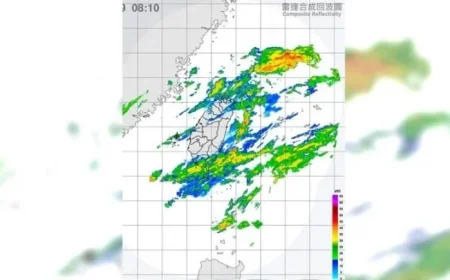Massive Rift Expanding in Earth’s Magnetic Field Raises Alarming Concerns

The South Atlantic Anomaly is undergoing significant changes, raising concerns among scientists and engineers regarding its impact on satellites and space missions. This irregular weakness in Earth’s magnetic field has been expanding and shifting eastward since researchers began monitoring it in 2014 using data from the European Space Agency’s satellites.
Understanding the South Atlantic Anomaly
Initially identified as a single weak spot, the South Atlantic Anomaly has now evolved into a more complex structure that covers an area nearly half the size of continental Europe. Observations indicate that it has formed a secondary, weaker lobe toward southern Africa, which appears to be deteriorating more rapidly than the core region near South America.
Key Findings on the Anomaly’s Expansion
- The anomaly has shifted and enlarged since its discovery.
- Recent studies reveal distinct behaviors in the anomaly’s two regions.
- Local factors in specific zones may be accelerating its decline.
Chris Finlay, a researcher at the Technical University of Denmark, highlighted the dynamic nature of the anomaly, confirming its variability between regions. The Swarm satellite constellation has played a crucial role in these observations, providing high-resolution data essential for understanding these changes.
Geophysical Implications of the Magnetic Weakness
At the heart of the South Atlantic Anomaly lie peculiar magnetic behaviors called reverse flux patches. These patches indicate a disruption in the typical flow of magnetic field lines, which usually extend outward from Earth’s core. Instead, these lines curve back, reflecting chaotic fluid movements in the molten outer core.
Magnetic Field Movements
- The anomaly’s region affects the magnetic field in a non-uniform manner.
- One flux patch is moving westward over Africa, pulling the anomaly along.
- Disruptions complicate predictions of the anomaly’s future behavior.
The checks on the northern hemisphere reveal contrasting changes. While the magnetic field strength over Canada has slightly decreased, areas over Siberia have intensified. The distinct trends also correlate with the northward migration of the magnetic pole toward Siberia, a phenomenon that has puzzled scientists for years.
Monitoring the Anomaly’s Effects
Continuous monitoring of the South Atlantic Anomaly is critical because of its increasing impacts on space-related technologies. The Swarm satellites are expected to provide data until at least 2030, contributing valuable insights into these long-term planetary phenomena.
Potential Risks to Space Hardware
- Increased exposure to solar radiation and charged particles.
- Higher risks of electronic damage and data corruption on satellites.
- Potential for temporary satellite blackouts in the affected regions.
While there is no immediate threat to people on the ground, the challenges posed to satellites are significant. As researchers keep a close eye on the anomaly, understanding its dynamics becomes paramount in mitigating the risks to space operations.






























